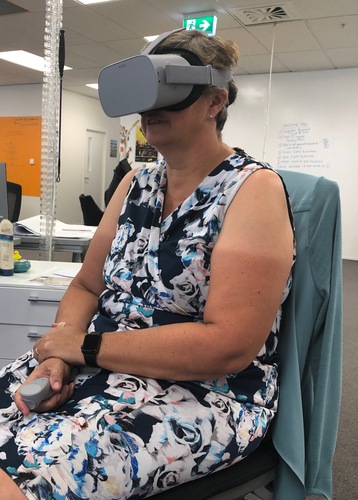The role of VR in the classroom, something we should be embracing or not?
Leveraging technology in the classroom is pretty well documented and understood these days. The need for enhanced digital technology skills and capabilities to be taught to ensure our ākonga (learners) are developing the range of skills they require for their future jobs is also well understood.
Here in Aotearoa NZ we have a digital technology curriculum designed to teach both plugged in and unplugged from the first day of school right through to when a learner leaves. There are a variety of challenges in delivering this which the Ministry of Education are working to overcome - in a landscape of other challenges we are all seeing play out in the media.
One tool some teachers are starting to embrace is using Virtual Reality (VR) as a means of teaching elements of all subjects. VR in the classroom isn’t a new concept, this article in the Education Gazette from 2021 showcases how a Dunedin college is is leveraging the technology across every subject with cool examples like taking a virtual journey through the digestive system or a virtual tour of Hillary’s Antartica hut.
What are the benefits of using VR in the classroom?
It doesn’t feel like work - one of the most positive reported benefits of using virtual reality to learn about a topic is that students feel it’s more like playing a game than doing class work making student enjoyment and uptake greater.
Accessibility - VR can make education more accessible to students who face challenges in traditional learning environments especially (but not limited in any way to) those with physical or sensory impairments.
Visualised learning - many of us learn visually so for those students VR creates a visualised learning framework. 2D pictures are great but a full 3D simulation provides much more detail.
Memorable - I have read a lot about how students find the VR experience memorable, what they discovered sticks.
Language - one benefit is depending on the software you use the VR experience can be delivered in a range of languages meaning students can learn in their native language.
There are a variety of other benefits, personalised learning, more cost effective than going there for many field trip lessons, health and safety is also a side benefit of staying in the classroom for some things, and finally I read often how important it is for students to experience VR to help prepare them for their future working lives.
What are the negatives of using VR in the classroom?
Right now there are a raft of technical challenges - it’s not perfect software yet and hard for teachers to get their heads around, not everything you want to teach has a VR experience, there are many technology choices which are hard to navigate.
Cost - while cheaper to take a virtual field trip there is a cost associated with setting a school up with VR technology - and then there is the question of what to invest those precious $$ in?
Risk of addiction - some parents are concerned using VR technology is just extending screen and gaming time and the risk of addiction is real
Isolated working - while a class can be working on the same topic and coming together outside the VR experience it is essentially a solo endeavour leading to isolated working.
The key thing I struggled to find out from reading research was whether VR improves learning outcomes. While it’s more memorable it’s not clear yet whether what students learn sticks.
After doing a lot of reading - what’s my conclusion?
There is a great deal of research out there, and even more hype. If you ask ChatGPT it is overwhelmingly positive about VR as a tool for instance.
Like anything VR has it’s place in a classroom context, it’s fun for students, more memorable for them and can create a rich experience taking a virtual walk through of that Ancient Greek monument you are learning about.
But it’s not as easy and accessible for teachers today as it should be, there is a cost associated with buying equipment and some parents are worried it just adds screen time.
On balance I think there is a place for VR in our classrooms, not for every subject or lesson but there are enough use cases it’s worth investigating.
And just for a laugh, here is me doing a racing car simulation a couple of years ago!

